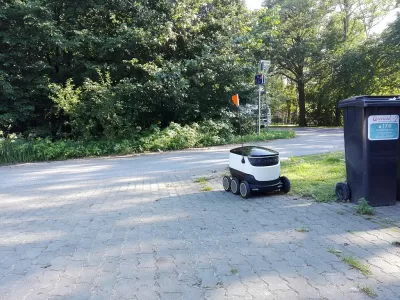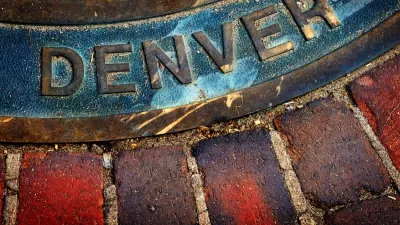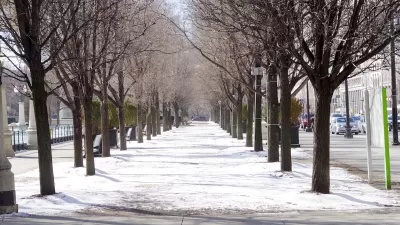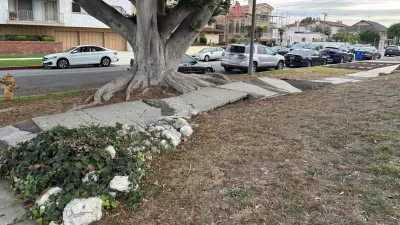Since 2017, 32 bills regulating or permitting "personal delivery devices"—sidewalk robots—have been introduced in 27 states.

In the era of two-day, same day, and even 30-minute delivery options for everything from toothpaste to wedding dresses, we tend to envision the world of increasingly rapid delivery as powered by drones that take to the air and drop orders off much the way that fictional storks deliver babies—right at your doorstep. However, chances are that—at least in the more immediate future—our deliveries are going to come to us in a more familiar way: by ground.
Often casually referred to as sidewalk robots, these “personal delivery devices” are electrically powered devices designed to deliver cargo locally. They’re equipped with automated driving technologies that allow them to operate with or without the remote support or supervision of a human. The products of companies spearheading the technology, like Starship and Amazon have devices that consist of a container on wheels that weigh in at roughly 100 pounds unloaded and roam at a pace of around one to three miles per hour. FedEx has a delivery robot as well—it’s a bit larger, heavier, and faster, rolling along at up to 10 miles per hour. Since 2017, 32 PDD bills have been introduced across 27 different states. Twenty one states have passed laws legalizing the use of at least some of these delivery robots on sidewalks.
But all these delivery robots move through the same pedestrian spaces that people do — think sidewalks, bike lanes, and crosswalks. They’ll be interacting with everything from people, dogs, people who use mobility devices, cyclists, cars, scooters, children, and more. While they may offer innovative deliveries of the future, Michael Clamann, a senior human factors engineer at the University of North Carolina’s Highway Safety Research Center who focuses on safety and federal legislation, has concerns surrounding the safety of PDDs, particularly when it comes to crash reporting and responsibility.
FULL STORY: Are Robots Coming to a Sidewalk Near You?

Study: Maui’s Plan to Convert Vacation Rentals to Long-Term Housing Could Cause Nearly $1 Billion Economic Loss
The plan would reduce visitor accommodation by 25,% resulting in 1,900 jobs lost.

North Texas Transit Leaders Tout Benefits of TOD for Growing Region
At a summit focused on transit-oriented development, policymakers discussed how North Texas’ expanded light rail system can serve as a tool for economic growth.

Why Should We Subsidize Public Transportation?
Many public transit agencies face financial stress due to rising costs, declining fare revenue, and declining subsidies. Transit advocates must provide a strong business case for increasing public transit funding.

How to Make US Trains Faster
Changes to boarding platforms and a switch to electric trains could improve U.S. passenger rail service without the added cost of high-speed rail.

Columbia’s Revitalized ‘Loop’ Is a Hub for Local Entrepreneurs
A focus on small businesses is helping a commercial corridor in Columbia, Missouri thrive.

Invasive Insect Threatens Minnesota’s Ash Forests
The Emerald Ash Borer is a rapidly spreading invasive pest threatening Minnesota’s ash trees, and homeowners are encouraged to plant diverse replacement species, avoid moving ash firewood, and monitor for signs of infestation.
Urban Design for Planners 1: Software Tools
This six-course series explores essential urban design concepts using open source software and equips planners with the tools they need to participate fully in the urban design process.
Planning for Universal Design
Learn the tools for implementing Universal Design in planning regulations.
Ascent Environmental
Borough of Carlisle
Institute for Housing and Urban Development Studies (IHS)
City of Grandview
Harvard GSD Executive Education
Toledo-Lucas County Plan Commissions
Salt Lake City
NYU Wagner Graduate School of Public Service





























